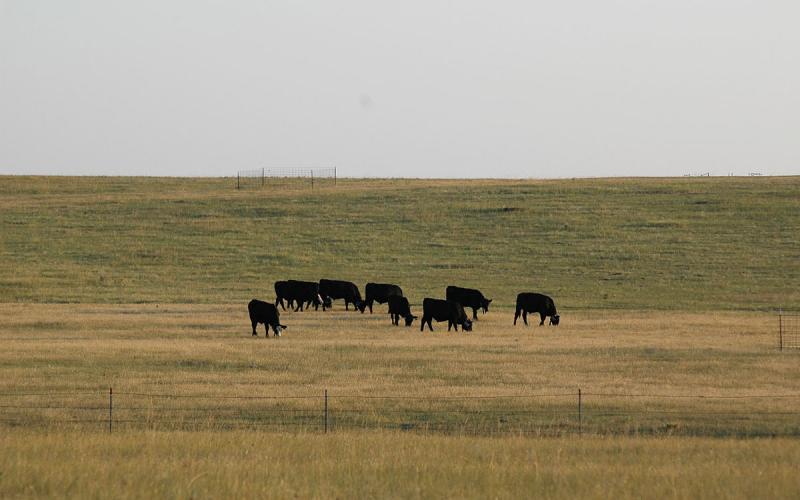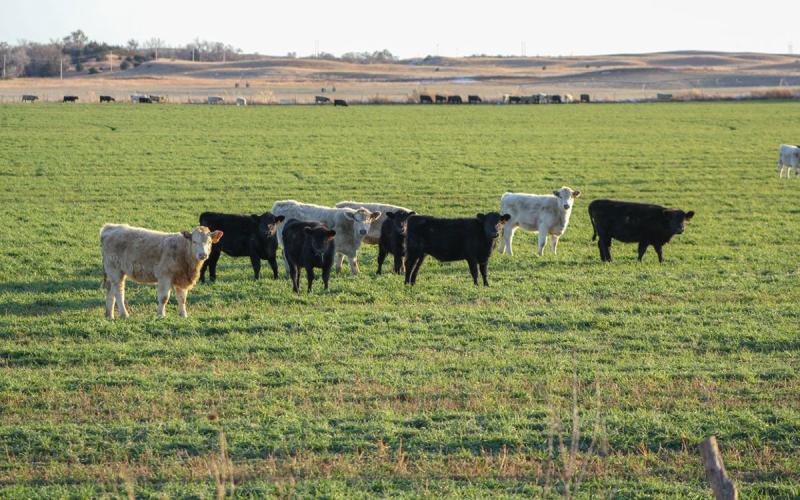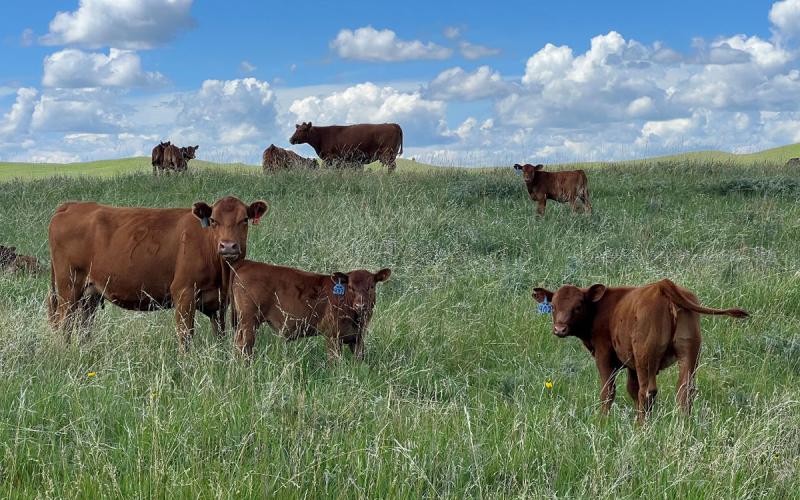What should I do to increase adaptability on my operation?
Becoming more adaptable is particularly important for the long-term wellness, success, and profitability of agriculture operations. The more adaptable an operation is, the more resilient they will be in the face of unpredictable climate and economic challenges. Anything that can be done to decrease input costs and increase options for management strategies will improve the adaptability of the operation.
The greatest sum in most cattle budgets is simply keeping those cows fed. The cost of feeding will further increase in the wintertime, because the requirement to provide harvested forages and supplementation is increased. Finding creative ways to reduce feed input costs, especially in the winter, will improve the financial sustainability of the operation. Simple adaptive management strategies can be utilizing climate tools for forage and stocking rate plans, maintaining herd flexibility, and exploring alternative production and feeding strategies.
How does grazing increase adaptability?
Grazing tends to be the most cost-effective way to feed cattle. This is because the cost of mechanically harvesting and transporting that forage is diminished while the cow is forced to do the work of harvesting her own feed. Strategies that extend the grazing season, use forage more efficiently, and minimize the feeding of stored forages will reduce winter feed costs. Grazing is the gift that keeps on giving, as long as there is rain and proactive management. Whether grazing on cropland or grassland, there are countless opportunities to increase adaptability.
The key to increasing grazing days on either grassland or cropland is to balance cattle nutrient requirements with available forage supply. Cow nutrient requirements will be highest about 6 to 8 weeks post calving (during peak lactation), and lowest after weaning (when lactation ceases). All producers should be aware of fluctuating cow nutrient requirements throughout the year and regularly assess their pasture conditions and forage supply. Combined, these efforts will make better use of available forage resources to meet cow nutrient requirements.
How can I use grassland to increase my grazing days?

On grassland, the normal grazing season generally lasts all summer, while active growth occurs. Forage nutrient quality is greatest during active growth and will decline throughout the season as plant species reach maturity and then go dormant. To increase grazing days, consider strategies like targeted species grazing, rotational grazing, and stockpiling forage, which can extend the normal grazing season into the spring or fall.
Targeted grazing is when specific plant species are grazed at certain times of the year. It is often used to control less-desirable plant species and help shape the landscape into a more-desirable resource. It can also be a good way to extend the grazing season. For example, an invasive cool-season grass can be a good candidate for targeted grazing, because it matures very quickly in the growing season and doesn’t provide good nutrition for very long. Target grazing it earlier in the spring, when plants are green, allows livestock to reap nutritional benefits before those plants mature.
Rotational grazing is all about actively managing the defoliation and recovery periods on the grasses. In short, rotational grazing is about providing recovery time to your pastures without the damage of active grazing. This strategy can increase forage utilization and greatly improve pasture health over time. While intimidating at first, rotational grazing produces many benefits and can be as simple or complex as one would like it to be. One of the easiest strategies to implement is called “rest rotation.” With this, one or more pastures are left completely ungrazed through the growing season to allow a full year’s growth and recovery of the pasture. An added benefit of this strategy is that ungrazed pastures can be used for winter grazing after going dormant.
Forage stockpiling is a way to reduce hay requirements and take advantage of winter grazing. This method allows for pasture growth to occur, without major grazing, until those grasses have matured and gone dormant. By allowing pasture growth to occur without the damage of grazing, forages can grow and become a ‘stockpile’ of dormant forage later in the year. Although winter grazing of pastures likely still requires protein supplementation, it can vastly reduce the amount of hay needed to sustain those livestock.
How can I use cropland to increase my grazing days?

On cropland, there is a tremendous opportunity to graze a variety of forages at many times throughout the year. The benefits of grazing cropland extend to both the crop and livestock sectors. Landowners can use grazing to improve soil health and reap the reward of rental rates. Livestock owners can gain access to high-quality and/or low-cost forage resources at various times throughout the year.
Consider where nutritional gaps occur on your operation that cropland forages could fill. For example, the availability of crop residues often coincides with fall weaning and lower nutrient requirements for spring cows. Whenever cash crops are not actively growing, livestock can graze. Livestock producers should actively seek collaboration with crop producers. Implementing strategies, such as grazing corn residue or cover crops and annual forages, can take advantage of off-season grazing and reduce fed hay requirements.
On corn residue, mature spring cows can selectively graze the leaf and husk components to maintain and even gain body condition. Because residue is just loosely spread across the ground, it is important that cattle utilize this forage before it is lost to weathering effects, such as wind. On the other hand, the possibilities are endless with grazing cover crops. These crops can range anywhere from brassicas to annual forages and can improve soil health for the farmer while providing high quality forage for cattle producers.


